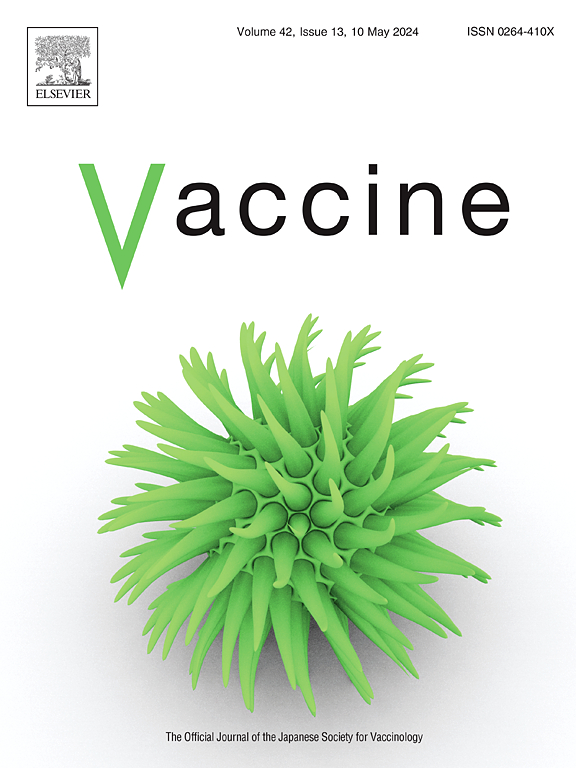Drivers of HPV vaccine hesitancy in New York and Florida
IF 4.5
3区 医学
Q2 IMMUNOLOGY
引用次数: 0
Abstract
Background
This study aimed to identify drivers of HPV vaccine hesitancy and effective public health interventions to increase HPV vaccination rates in two U.S. states (New York and Florida) and 12 counties within each state. The findings provide insights into the impact of demographics, state policies, and vaccine confidence on HPV vaccination.
Methods
We utilized a mixed-method approach, integrating quantitative analysis of county-level surveys, qualitative interviews, and secondary data on HPV vaccine coverage. Surveys, adapted from the Vaccine Confidence Project (VCP) and the World Health Organization (WHO), assessed HPV vaccine confidence, socio-demographics, and behavioral determinants. Interviews explored barriers, interventions, and policies related to HPV vaccination.
Findings
Parents and providers have not prioritized HPV vaccination compared to other vaccines, with less concern about HPV than other vaccine-preventable diseases. Socio-demographic factors, such as race, age, gender, religion, employment, and income impacted children's vaccination status. Female parents aged 35–44 and those with a professional degree were more likely to vaccinate their children. Perceptions of the vaccine's importance and safety significantly influenced vaccination.
Interpretation
Identifying socio-demographic determinants and behavioral motivators can guide targeted interventions. Our study highlights complex factors influencing HPV vaccination at the state and county level, offering policymakers strategies to tailor interventions addressing barriers and hesitancy in areas with lower vaccination rates.
纽约和佛罗里达HPV疫苗犹豫的驱动因素
本研究旨在确定HPV疫苗犹豫的驱动因素和有效的公共卫生干预措施,以提高美国两个州(纽约州和佛罗里达州)和每个州的12个县的HPV疫苗接种率。这些发现为人口统计、国家政策和疫苗信心对HPV疫苗接种的影响提供了见解。方法采用混合方法,对县级调查、定性访谈和HPV疫苗覆盖率的二次数据进行定量分析。来自疫苗信心项目(VCP)和世界卫生组织(WHO)的调查评估了HPV疫苗信心、社会人口统计学和行为决定因素。访谈探讨了与HPV疫苗接种有关的障碍、干预措施和政策。与其他疫苗相比,父母和提供者并没有优先考虑HPV疫苗接种,与其他疫苗可预防的疾病相比,他们对HPV疫苗的关注较少。社会人口因素,如种族、年龄、性别、宗教、就业和收入影响儿童的疫苗接种状况。年龄在35-44岁之间的女性父母和拥有专业学位的女性父母更有可能为孩子接种疫苗。对疫苗重要性和安全性的认识显著影响了疫苗接种。确定社会人口统计学决定因素和行为动机可以指导有针对性的干预措施。我们的研究强调了影响州和县HPV疫苗接种的复杂因素,为政策制定者提供了量身定制干预措施的策略,以解决疫苗接种率较低地区的障碍和犹豫。
本文章由计算机程序翻译,如有差异,请以英文原文为准。
求助全文
约1分钟内获得全文
求助全文
来源期刊

Vaccine
医学-免疫学
CiteScore
8.70
自引率
5.50%
发文量
992
审稿时长
131 days
期刊介绍:
Vaccine is unique in publishing the highest quality science across all disciplines relevant to the field of vaccinology - all original article submissions across basic and clinical research, vaccine manufacturing, history, public policy, behavioral science and ethics, social sciences, safety, and many other related areas are welcomed. The submission categories as given in the Guide for Authors indicate where we receive the most papers. Papers outside these major areas are also welcome and authors are encouraged to contact us with specific questions.
 求助内容:
求助内容: 应助结果提醒方式:
应助结果提醒方式:


